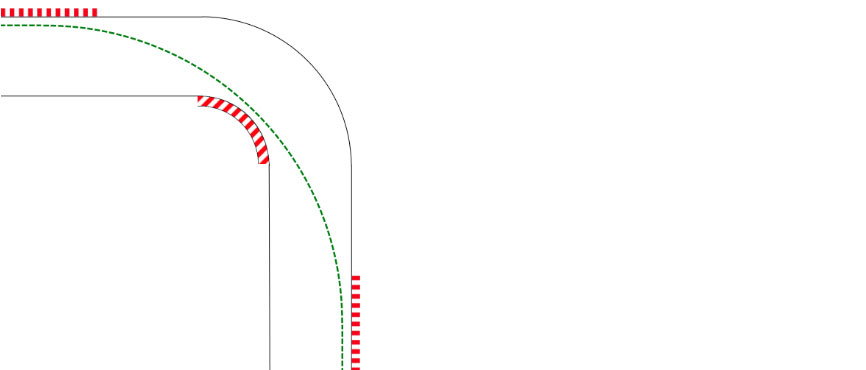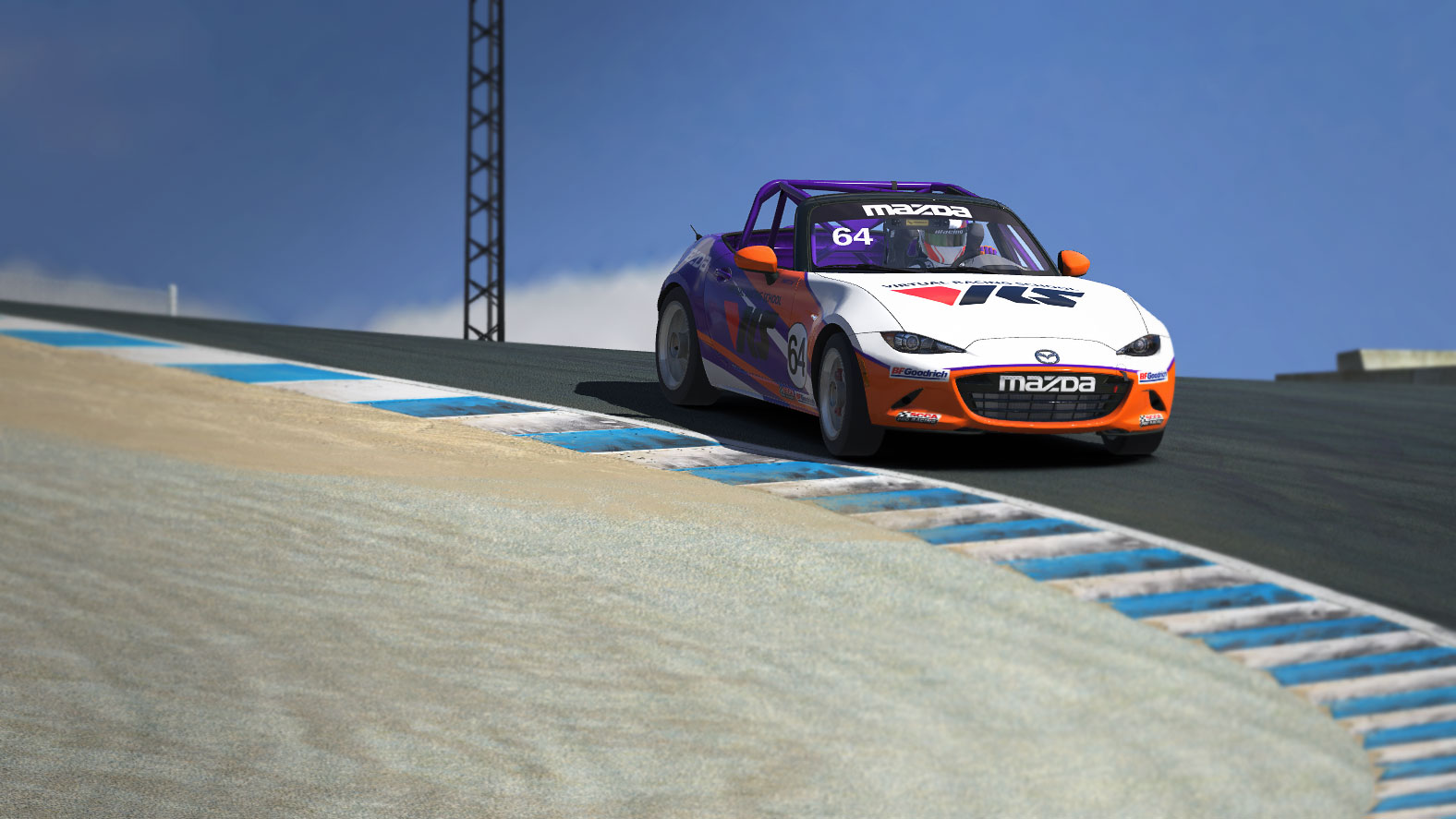Having learned about the traction circle, the optimal racing line, and car control, the next chapter in this series looks at braking technique. Your brakes serve two purposes. The first is pretty obvious: to slow the car down. The second is more subtle, which is that brakes offer a method of controlling weight transfer and balance from corner entry to apex.
Straight line threshold braking
To brake as late as possible, you want to reduce the time spent slowing the car to a minimum. Achieving this requires you to exploit nearly 100% of the available grip from the tires in a straight line. This is known as threshold braking. It’s the brake pressure required to reach the point at which the tires are just on the edge of locking up, and no more.
We’ll divide braking technique up into non-downforce cars, such as the Mazda MX-5, Skip Barber, Porsche/RUF and Lotus 49, and downforce cars, such as the Formula Renault 2.0, the HPD, and the McLaren MP4-30. Even if you drive a downforce car, read the non-downforce section first.
Non-downforce cars
Don’t be afraid to brake too hard when you first hit the pedal from high speed. This is when the wheels have the most energy and are least likely to lock up. From this moment on, reaching threshold braking is a case of delicate modulation, and very much a feel thing, requiring practice.
With the above in mind, there are a couple of sources for feedback which can help out in the “feel” department. Firstly it’s a matter of listening to the tires, or in the case of open wheelers, visually seeing them lock up. It’s also possible (but more difficult) to feel changes in load through force feedback and rpm changes in the case of rear locking. Learn how the tires sound just before they lock up, and avoid braking harder than that (to help, you can raise the tire volume in the options menu). The required pressure will be consistent and repeatable regardless of speed assuming tire wear is discounted and the circuit is flat. This is therefore something which can be trained into your muscle memory over repetition. It’ll be obvious in iRacing when you’ve locked up, the tires will screech, the car won’t turn in the case of a front lock up, and you may see visible smoke.
VRS app telemetry braking trace before T5 at Okayama in the MX-5:
Downforce cars
Fundamentally the same rules apply to downforce cars, but it’s key to understand that the level of grip is speed-dependent. At high speed the car will produce more downforce and therefore the tires will have more grip when compared to travelling at low speed. When you start braking therefore, your speed is obviously greater than when you finish, and the grip level in turn decreases as you continue to brake. This of course means the required threshold braking pressure will decrease in connection with your speed.
How this typically works in practice: Slam the brakes to reach threshold braking quickly, then “bleed” off the brakes at the same rate as the car slows down and the downforce comes off.
Turn 1 at COTA with Martin Krönke in the MP4-30:

A common mistake in racing downforce cars is not braking hard enough initially. Drivers tend to brake with an initial force which causes the tyres lock up at the end of the braking zone, failing to take full advantage of the extra grip early on.
ABS
Many modern race cars such as the GT3 class now feature driver aids such as traction control and ABS. Whilst ABS prevents locking of the wheels under heavy braking – especially when turning at the same time – it shouldn’t be relied on. Correctly carried out threshold braking is still more efficient, as ABS tends to work in a pulsating manner meaning the tyres lock up very briefly, reducing the braking performance and causing additional tire wear and heat. However, threshold braking is much easier to achieve in ABS equipped cars, as you get additional feedback – when engaged the ABS causes significant vibration which can be felt through the wheel with force feedback. Reduce brake pressure so you only have a subtle hint of this.
Understanding threshold braking while steering
Braking is further complicated when turning into a corner, and if you refer back to article 3.1 “The traction circle” you will know that in order to stay within the limits of the available grip at the tyres, you must reduce brake pressure as you steer, and eventually come off them at the point at which 100% of available lateral grip is being exploited (typically the apex of a corner).
Trail braking
The earlier paragraph is often termed “trail braking”, and is why you’ll see a fast driver bleed off the brakes as they turn into a corner even in cars without downforce. Proper trail braking technique however takes this a step further, and involves continuing to hold onto the brake pedal very deep into corners, typically right up to the moment at which the driver starts to apply throttle. This form of trail braking isn’t so much used to slow the car down but instead as a control method to maintain load on the front tires and reduce understeer from corner entry to apex. You can see evidence of this in Martin’s telemetry from the trace earlier in this article in his reluctance to fully release the brake pedal.
Here we can see David trail braking into T1 at Zolder with the BMW Z4. We have divided the braking phases as shown:

A: Threshold braking – bleeding off with downforce level
B: Exploiting the traction circle – reducing brake pressure with increasing steering angle
C: Trail braking – continuing to hold the brakes at 5-10% until applying exit throttle
Up to you:
These techniques will take a lot of practice and repetition before they start to become natural, and initially you may be worse off. Focus on one technique at a time and refer back to the VRS app for telemetry to review your efforts.

 Welcome to season two of the VRS Academy — let’s dive into racing on a more technical level. We’ll start off with the traction circle, which is a key element used to understand the grip available from the tyres.
Welcome to season two of the VRS Academy — let’s dive into racing on a more technical level. We’ll start off with the traction circle, which is a key element used to understand the grip available from the tyres.

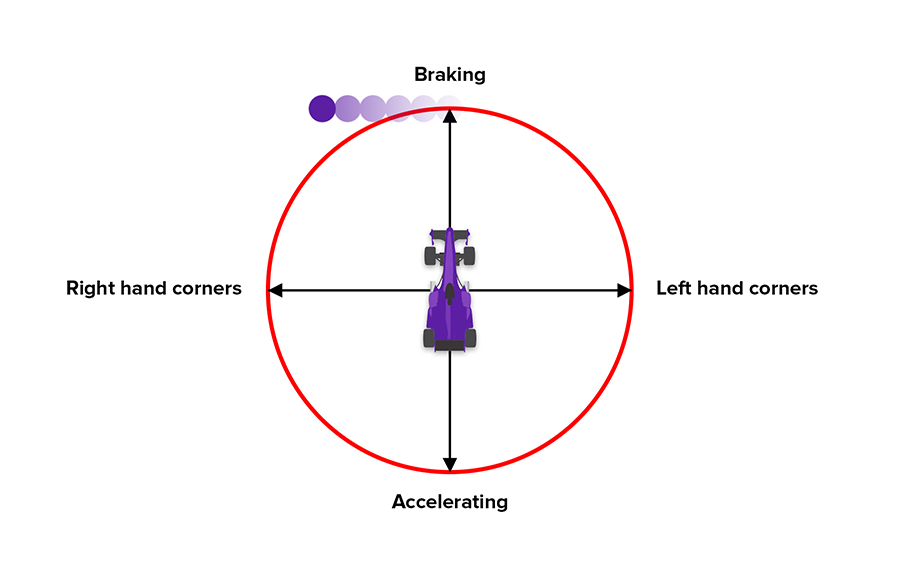
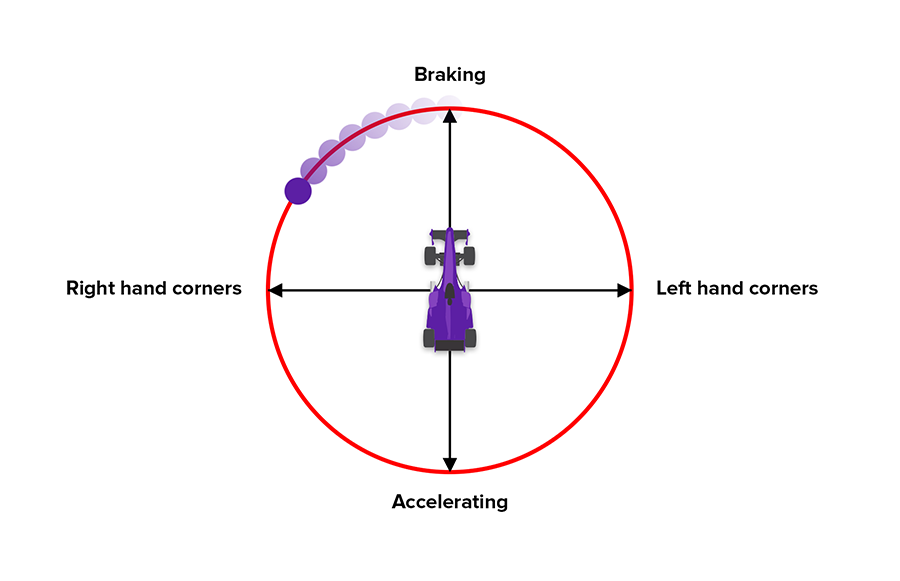


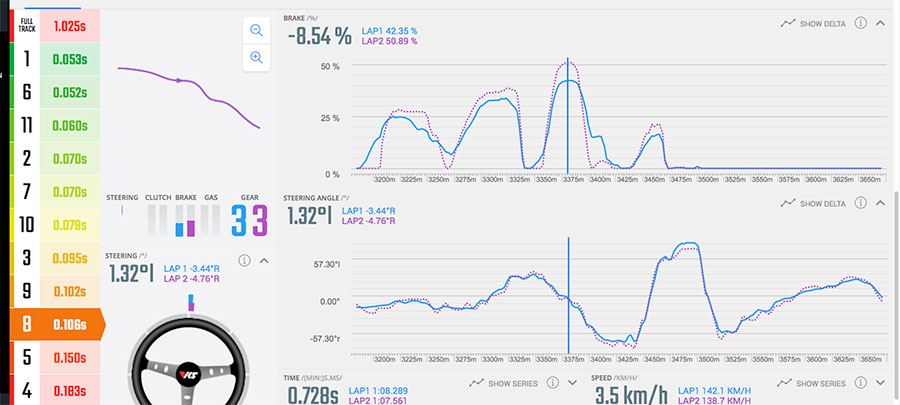
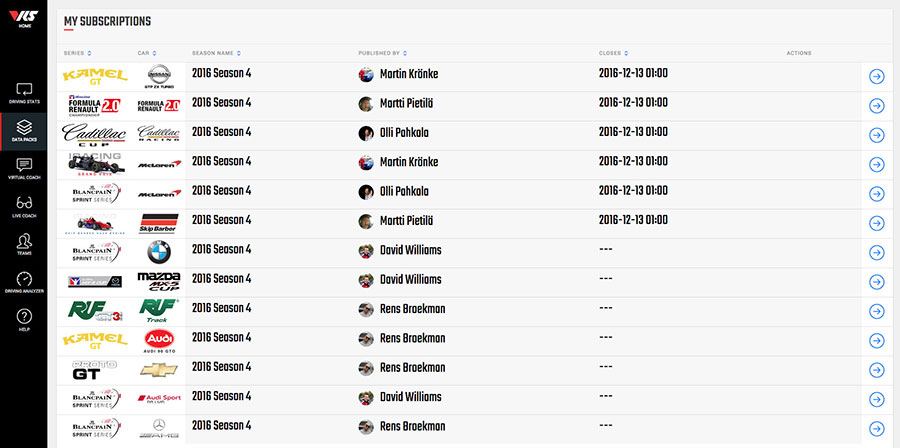
 The optimal lap is easy to describe, but difficult to achieve. It’s a combination of two basic things: utilising the full grip of the tyres through the perfect line. In other words: optimal racing line & optimal speed.
The optimal lap is easy to describe, but difficult to achieve. It’s a combination of two basic things: utilising the full grip of the tyres through the perfect line. In other words: optimal racing line & optimal speed.